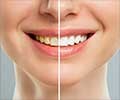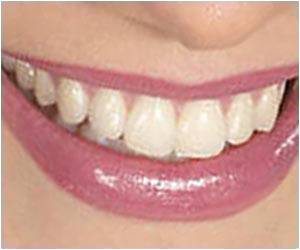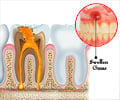
‘Whitening products that make your smile brighter can also cause tooth decay. Hydrogen peroxide, the active ingredient used in whitening strips can damage the protein-rich dentin tissue found beneath the tooth's protective enamel.’
Read More..Tweet it Now
The study, led by researchers from the Stockton University in the US, found that hydrogen peroxide -- the active ingredient in whitening strips -- can damage the protein-rich dentin tissue found beneath the tooth's protective enamel. Read More..
Human teeth is made up of three layers -- the outer tooth enamel, an underlying dentin layer and connective tissue that binds the roots to the gum.
Unlike most studies which have focused on tooth enamel, the new study focused on dentin, which makes up most of the tooth and has high levels of protein -- most of which is collagen.
The team demonstrated that the major protein in the dentin is converted to smaller fragments when treated with hydrogen peroxide. In additional experiments, they treated pure collagen with hydrogen peroxide and then analyzed the protein using a gel electrophoresis laboratory technique that allows the protein to be visualized.
"Our results showed that treatment with hydrogen peroxide concentrations similar to those found in whitening strips is enough to make the original collagen protein disappear, which is presumably due to the formation of many smaller fragments," said Kelly Keenan, Associate Professor at the varsity.
Advertisement
Further, they plan to characterize the protein fragments released when collagen is treated with hydrogen peroxide and determine if hydrogen peroxide has the same impact on other proteins in the teeth.
Advertisement
Source-IANS













